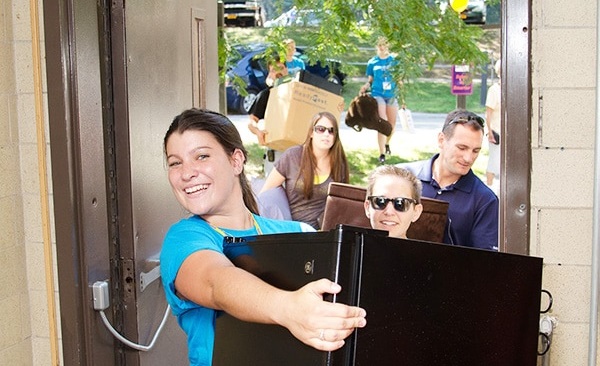Welcome to our blog, where we believe that saving money doesn’t have to be a daunting task. In fact, with a few practical tips and some innovative strategies, you can quickly start making significant savings in your everyday life. Whether you’re looking to save for a dream vacation, pay off debt, or build up your rainy day fund, we’ve got you covered.
This article will explore ten actionable ways to save money daily. From cutting back on cable TV expenses to finding creative ways to stretch your grocery budget, these tips are designed to help you make the most of every dollar.
So grab a cup of coffee (homemade is cheaper!) and prepare for money-saving inspiration. Let’s dive right into it!
1. Saving on Groceries
When it comes to saving money, our grocery budget is one area where we can all make a significant impact. With some simple strategies and a little planning, you can slash your grocery bill without sacrificing the quality of food.
Start by making a meal plan for the week. This will help you avoid unnecessary trips to the store and prevent impulse buying. Take inventory of what you already have in your pantry and freezer, and plan your meals around those ingredients. Not only will this save you money, but it will also reduce food waste.
Next, make a shopping list before heading to the store. Stick to this list religiously and avoid getting lured into buying items that aren’t necessary. Consider using generic or store brand products instead of name brands – they often offer equal quality at a lower price.
Another way to cut costs is by using coupons strategically. Look for digital coupons online or in-store flyers before shopping. Combine these with sales for maximum savings. Additionally, consider joining loyalty programs offered by supermarkets, as they often provide exclusive discounts and rewards.
Remember to underestimate the power of bulk buying! Purchasing non-perishable items like pasta, rice, and canned goods in larger quantities can significantly lower their cost per unit over time.
By implementing these simple tips into your grocery routine, you’ll be amazed at how much money you can save each month while still enjoying delicious meals! Happy shopping!
2. Cutting Back on Cable TV
Are you tired of paying exorbitant fees for cable TV? Well, there are plenty of ways to cut back and save some serious cash. Here are a few tips to help you do just that.
Consider ditching your traditional cable subscription altogether. With the rise of streaming services like Netflix, Hulu, and Amazon Prime Video, plenty of entertainment options are available at a fraction of the cost. These platforms offer a wide range of shows and movies on-demand, allowing you to watch what you want when it suits you best.
If live sports is something you can’t live without, consider subscribing to a sports streaming service instead. Many major leagues now have dedicated platforms where you can catch all the action without paying for an expensive cable package.
Another option is to invest in an indoor antenna. This allows you to access local channels for free over-the-air broadcasts. While this may not give you access to every channel under the sun, it does provide a cost-effective way to stay connected with news and local programming.
Remember, there are free streaming options! There are websites and apps out there that offer thousands of hours’ worth of content utterly free of charge. Just be mindful of potential copyright issues, and always use reliable sources.
By cutting back on cable TV expenses, you’ll save money and gain more control over your viewing habits. So why wait? Start exploring alternative entertainment options today!
3. Using Apps to Track Spending

One of the most practical ways to save money in today’s digital age is by using apps to track your spending. With many personal finance apps available, monitoring your expenses and staying on top of your financial goals has always been challenging.
These apps allow you to categorize your expenditures, set budget limits, and receive notifications when you’re getting close to reaching those limits. By having a clear picture of where your money is going, you can make more informed decisions about how to cut back and save.
Furthermore, many apps offer additional features like bill reminders, goal-setting tools, and investment tracking. They provide a comprehensive view of your financial health all in one place.
Using a website DontPayFull.com also eliminates the need for manual record-keeping or sifting through piles of receipts. It streamlines the process and makes managing your finances much more efficient.
Not only do these apps help with day-to-day spending habits, but they also enable long-term planning. You can analyze trends over time and identify areas where you can make adjustments for better savings.
Utilizing personal finance apps is a smart move that empowers individuals to take control of their finances effortlessly. So why not give it a try? Your wallet will thank you!
4. Making the Most of Tax Returns
Tax season can be stressful for many people, but it doesn’t have to be all anxiety and dread. Your tax return allows you to save money and improve your financial situation. Here are some practical tips on making the most of your tax returns.
1. Pay off debt: If you carry high-interest credit card debt or loans, consider using your tax refund to pay them off. This will save you money in interest payments and help improve your credit score.
2. Start an emergency fund: Having a cushion of savings is essential for unexpected expenses that life throws. Use part of your tax refund to start or add to an emergency fund, ensuring you’re financially prepared for surprises.
3. Invest in retirement: Use compound interest by contributing some of your tax refunds into a retirement account like an IRA or 401(k). The earlier you start investing for retirement, the more time your money has to grow.
4. Save for education: If you have children or plan on going back to school yourself, consider putting some of your tax return towards a college savings account like a 529 plan or Coverdell Education Savings Account (ESA).
5. Home improvements: Use part of your tax refund to make necessary repairs or upgrades around the house that can increase its value over time – this could include painting rooms, replacing old appliances with energy-efficient ones, or improving curb appeal.
6. Donate to charity: Giving back helps those in need and can provide potential deductions on next year’s taxes if you itemize deductions instead of taking the standard deduction.
Remember that everyone’s financial situation is unique, so tailor these suggestions based on what makes sense for you and consult a professional if needed! By maximizing how we use our refunds each year through thoughtful planning and consideration – we can turn what might feel like “extra” money into a long-term investment in our financial well-being.
5. Making the Move to a Dorm Room

Making the move to a dorm room can be both exciting and daunting. It’s your first taste of independence, but it also means leaving behind the comforts of home. However, with careful planning and smart choices, you can make this transition easier on your wallet.
Resist the urge to buy everything new for your dorm room. Look for secondhand furniture and decor items that are still in good condition. You’ll be surprised at how much money you can save by doing this!
Another way to save is by sharing expenses with your roommate(s). Splitting the cost of everyday items like cleaning supplies or kitchen appliances will help lighten the financial burden.
Meal planning is another essential habit for living in a dorm room. Eating out regularly is not only expensive but also unhealthy. By cooking simple meals using affordable ingredients, you’ll save money and improve your culinary skills.
Remember energy-saving habits, too! Unplugging electronics when not in use and using natural light instead of artificial lighting can significantly reduce your electricity bill.
Take advantage of any student discounts available to you. Many stores offer special deals for college students, so always carry your student ID with you and ask about discounts wherever you go.
Moving into a dorm room may require some adjustments, but with these money-saving tips in mind, you’ll be well on your way to managing your finances responsibly while enjoying all that college life has to offer!
6. Preparing for College
The transition from high school to college can be both exciting and overwhelming. As you embark on this new chapter of your life, it’s essential to prepare yourself academically and financially. Here are a few practical money-saving tips to help ease the burden:
1. Apply for scholarships and grants: Take the time to research and apply for scholarships and grants that can offset the cost of tuition. Remember to underestimate the power of free money!
2. Consider community college: If you need more clarification about your major or want to save money, starting a community college can be an intelligent choice. You’ll still get a quality education without breaking the bank.
3. Buy used textbooks: Textbooks can be expensive, but there are ways to cut costs. Look for used books online or consider renting them instead of buying new ones.
4. Cook your meals: Eating out may seem convenient, but adds up quickly. Invest in some basic cooking skills and start preparing your meals – not only will you save money, but you’ll also develop healthier eating habits.
5. Take advantage of student discounts: Many retailers offer special discounts for students with a valid ID card. From clothing stores to movie theaters, always ask if they have any student deals before purchasing.
6. Look into part-time jobs on campus: Working part-time while in college can provide extra income while allowing flexibility with your class schedule.
7. Budget wisely: Create a budget that includes all your expenses – tuition fees, housing costs, food expenses – so that you know exactly where your money goes each month.
8 Save on transportation costs: Consider using public transportation or carpooling with friends instead of owning a car while in college – it’s cheaper and more environmentally friendly!
9. Avoid unnecessary spending: It’s easy to get caught up in social activities and spend money unnecessarily during college. Be mindful of your spending and prioritize what is truly important to you.
7. Saving for a Home Purchase

Buying a home is a primary financial goal for many people. It can be an exciting and rewarding experience but also requires careful planning and saving. Here are some practical tips to help you save for your dream home.
Create a budget that includes a dedicated savings plan for your home purchase. Determine how much you need to save each month and stick to it. Cut back on unnecessary expenses like dining out or buying expensive clothing.
Consider downsizing or finding ways to earn extra income to boost your savings. Renting out a spare room or taking on freelance work can provide additional funds towards your down payment.
Another way to save is by automating your finances. Set up automatic transfers from your checking account into a separate savings account designated for your home purchase. This will ensure regular contributions without the temptation of spending the money elsewhere.
Research different mortgage options and compare interest rates from various lenders. By doing so, you may find more favorable terms that can save you thousands of dollars over the life of the loan.
Additionally, consider seeking professional advice from a financial advisor or mortgage broker who specializes in helping individuals save for their first home purchase. They can offer valuable insights and guidance tailored to your specific situation.
Pay attention to government programs or incentives to assist first-time buyers with down payment or closing costs. Research local programs in your area that could provide financial assistance toward achieving homeownership.
Remember, saving for a home purchase requires discipline and patience, but with proper planning and determination, you’ll be one step closer to making that dream come true!
8. Automating Your Finances
In this fast-paced world, losing track of your finances can be easy. Bills pile up, payments are missed, and you’re drowning in debt before you know it. But fear not! Automating your finances is a simple yet effective way to stay on top of your money matters.
One of the first steps in automating your finances is setting up automatic bill payments. This ensures that your bills are paid on time every month without you having to lift a finger. No more late fees or penalties!
Next, consider setting up automatic transfers to savings accounts or investment portfolios. By automatically saving a portion of your monthly income, you’ll build an emergency fund and start working towards long-term financial goals.
Another helpful tool for automating your finances is budgeting apps. These apps allow you to track and categorize expenses, see where your money is going, and make necessary adjustments.
Additionally, many banks offer alerts and notifications for things like low balances or unusual spending patterns. By enabling these alerts, you’ll have peace of mind knowing that any potential issues will be brought to your attention promptly.
Consider using automatic investment services such as robo-advisors. These platforms use algorithms to manage and invest your money based on predefined parameters. It’s a hands-off approach that takes the guesswork out of investing.
Automating certain aspects of our financial lives can save time and energy while staying financially responsible. So why wait? Take control of your finances today by embracing automation!
Conclusion
Managing your money wisely is an essential skill that can lead to financial stability and a brighter future. By implementing these practical money-saving tips into your everyday life, you can build a solid foundation for financial success.
From saving on groceries, cutting back on cable TV, using apps to track spending, and making the most of tax returns, there are numerous ways to make every dollar count. Whether preparing for college or saving for a home purchase, taking control of your finances will empower you to achieve your goals.
Remember, it’s not about depriving yourself of enjoyment or living frugally at all times. It’s about being mindful of spending and finding creative ways to save without sacrificing quality or happiness.
So go ahead and take charge of your finances today! Start implementing these practical money-saving tips into your daily routine and watch as those small changes increase. Your future self will thank you!
Read also:
- Beyond Compensation – Exploring Why Paystubs Matter for Your Business
- Navigating the Digital Boardroom – Key Considerations for Successful Implementation
- Personal Development Redefined – The Rai Reflex Index (RAI) Approach
- Mastering the Art of Secure Deals – A Deep Dive into SAFE DEAL (SFD)
- Choosing the Right Pay Stub Software – A Definitive Guide

